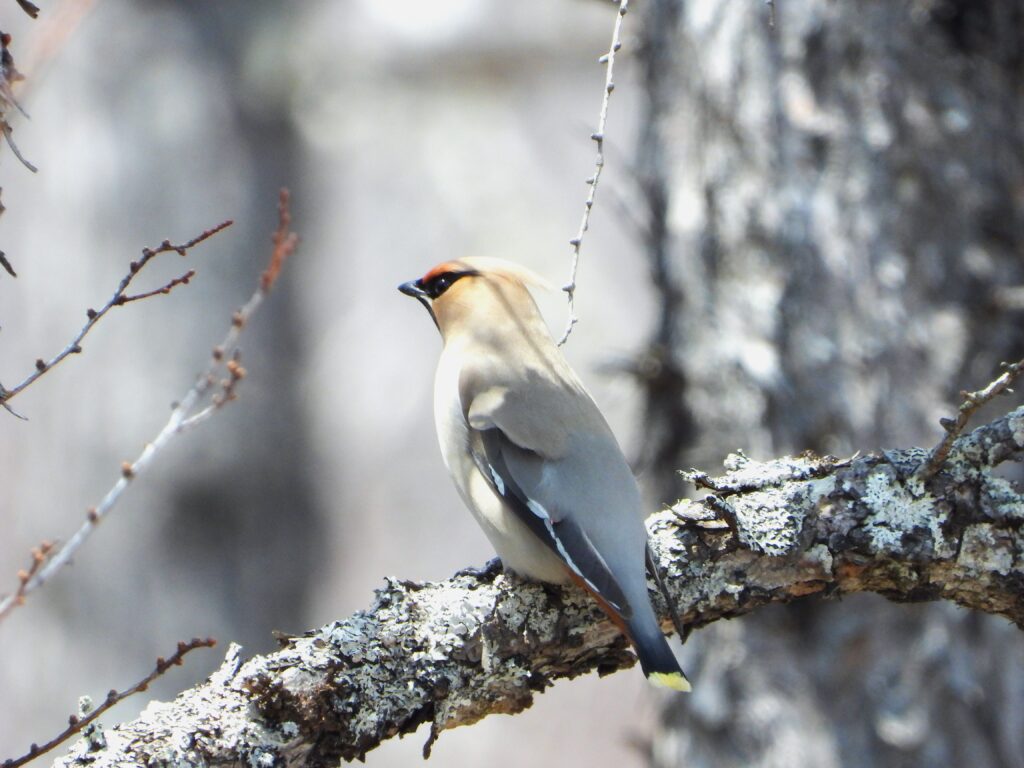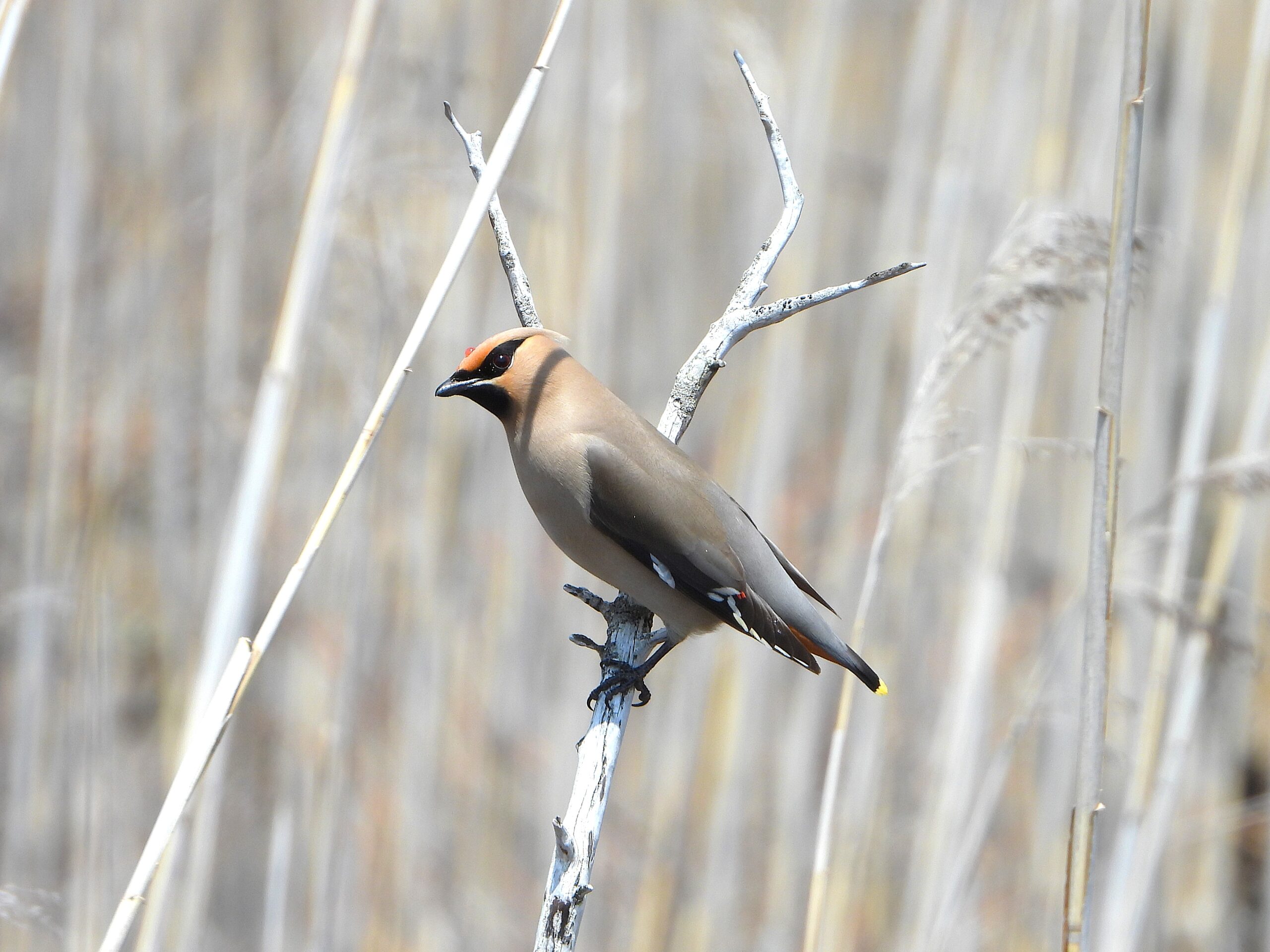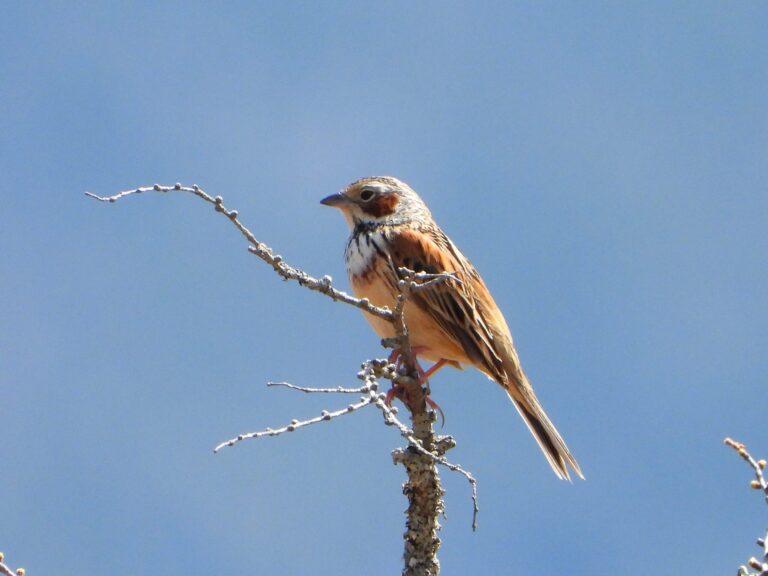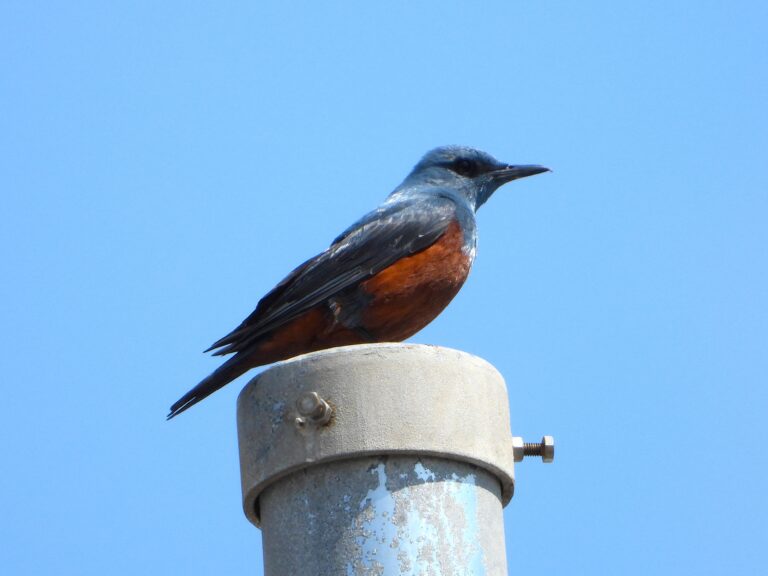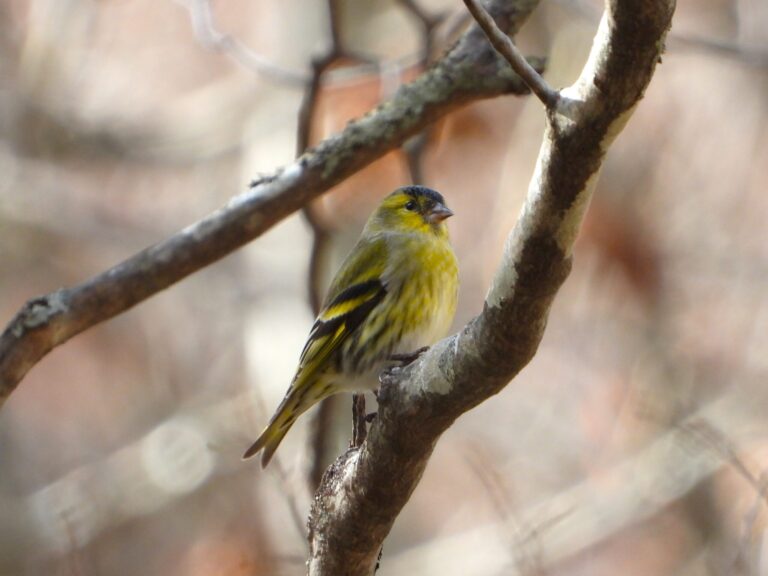Bohemian Waxwing (Bombycilla garrulus) – Wildlife of Japan
Introduction
The Bohemian Waxwing is a crested songbird known for its silky plumage and the wax-like tips on its wings. In Japan, it appears irregularly during winter, forming flocks in years when fruit is abundant, but it may be almost absent in others.
Appearance
This species has a grayish-brown body, black facial mask, and a prominent crest. Its wings display white and yellow markings, and the tail has a distinct yellow tip. The small red “wax drops” on its wing feathers give the bird its name. It can be distinguished from the Japanese Waxwing by its yellow (not red) tail tip and more extensive white on the wings.
Habitat & Distribution
The Bohemian Waxwing breeds across northern Eurasia and North America in boreal forests. In East Asia, it winters irregularly, following the distribution of berry-bearing trees. In Japan, it is mainly observed in Hokkaido and northern Honshu between November and March, depending on the availability of food.
Where to See in Japan
Look for flocks in urban parks, temple grounds, and residential areas with fruiting trees such as rowan, mistletoe, Viburnum, or crabapple. They often mix with Japanese Waxwings, especially during berry-rich winters. Reliable sightings come from Hokkaido, Aomori, Akita, and Nagano (e.g., Asahikawa and Nobeyama Highlands).
Behavior
Bohemian Waxwings are highly social in winter, moving in synchronized flocks. They perch on treetops and descend to feed on berries. Their call is a soft, ringing trill—“srii srii”—often heard before the flock becomes visible.
Diet
Primarily frugivorous, feeding on berries of rowan, mistletoe, hawthorn, and Viburnum. Insects are taken during summer in breeding areas, especially to feed chicks.
Reproduction
The species does not breed in Japan. In its northern breeding range, it nests in conifers, laying 3–6 eggs. Both sexes share incubation and chick-rearing duties.
Conservation
Globally listed as Least Concern by the IUCN, though populations fluctuate depending on berry availability. In Japan, winter appearances are highly variable. Urban hazards such as window collisions and loss of berry trees may affect local flocks.
Author’s Impression
The Bohemian Waxwing is a fascinating bird whose appearance in Japan varies greatly from year to year—sometimes large flocks arrive, while in other years none appear at all. Spotting them often depends on luck. Since waxwings love the berries of mistletoe, searching for mistletoe-covered trees is the best way to increase your chances of finding them.
For comparison, see the closely related Japanese Waxwing (Bombycilla japonica).
